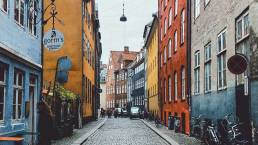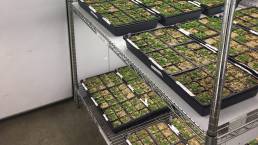We interviewed Ellen Salamon who is a Master's student whospent a semester at University of Califonia, Santa Cruz in 2021. Read more about her experience as a Fulbrighter below.
What was the academic purpose of your stay and what was your project about?
The purpose of my stay as a Master’s student was to work with the Zehr lab at University of California Santa Cruz. They are the leading research group in my field, so being able to learn from them was an incredible opportunity. I did not only learn new techniques, but I also received guidance toward carrying out great research. My project during my stay was about a special kind of bacteria in the ocean known as diazotrophs. They can take nitrogen from the air and make it available to the other organisms in the ocean, such as algae. The added nitrogen impacts primary productivity, and consequently the algae’s capability to take up CO2 from the atmosphere. This process of nitrogen fixation affects the nitrogen and carbon cycles that are closely connected and have an impact on the world’s climate. Understanding nitrogen fixing bacteria is therefore important to get a better picture of how our climate will change in the future and the data can be used to optimize Earth system models that can predict climate change in the future.
Fulbright Grants
Each year Fulbright Denmark awards grants to top Master and PhD-students wanting to study in the U.S.
Ellen Salamon is a Master's student at Copenhagen University and as part of her research, she spent 9 months at University of California in Santa Cruz.
What did you accomplish during your semester as a Master’s student at UC Santa Cruz?
I managed to get to know a lot of different researchers within my own field, but also generally in the Earth and Marine Sciences department at UC Santa Cruz. We would go diving and surfing together, enjoying the beautiful surroundings of Santa Cruz. I also planned and carried out a project as part of a research cruise that took place northeast of Maui. Here I worked together with scientists from many different Universities across the US such as University of Southern California, Massachusetts Institute of Technology, University of Washington, University of Montana, and University of Hawaii. After returning from a very successful trip, I processed many of my water samples using molecular techniques. The SCOPE-PARAGON research cruise focus was on particles in the (nutrient poor) oligotrophic ocean. I investigated the nitrogen fixing bacteria’s particle associations to better understand how they obtain energy in an otherwise nutrient-poor area since nitrogen fixation is a very energy-demanding process.
"Being able to learn from them was an incredible opportunity"
- Ellen Salamon, Fulbrighter 2020-2021
How did Fulbright shape your stay?
I had amazing support in planning and doing all the paperwork necessary to carry out such a stay abroad, especially in the middle of a pandemic. It was nice to have some sort of community with the other Fulbrighters online, although it was a shame we could not meet in person. Being a part of the Fulbright program also really reminded me of why I was undertaking this journey and helped me focus on getting the most out of the cultural exchange that such a stay can provide.
What advice would you give to others embarking on similar academic exchanges?
Get out there and get to know people! Be involved and show what you have to offer coming from another place with other traditions and customs. Try to implement things such as eating lunch together or doing activities together outside the daily research. I started a surf club with some other lab members, and that was a great way of having fun together outside the lab. If you have the possibility, try to get housing where you live with Americans and not just other international visitors. By doing that, you have a great opportunity to really get to know Americans in another way than when you just work alongside each other.
During her stay she worked on a project about a special kind of bacteria in the ocean known as diazotrophs.
Related
January 21, 2022
Thanks To Scandinavia Grant for Danish students on master’s level
The competition for students to apply for the grant is open until March 2nd.
December 17, 2021
The Life of a Fulbright Specialist in Denmark
We interview Ms. Carol Jensen about her stay as a Specialist at CPH Business.
April 14, 2021
Analyzing Plants at UC Davis
Emma sowed, analyzed and testet almost 1.000 plants at UC Davis




